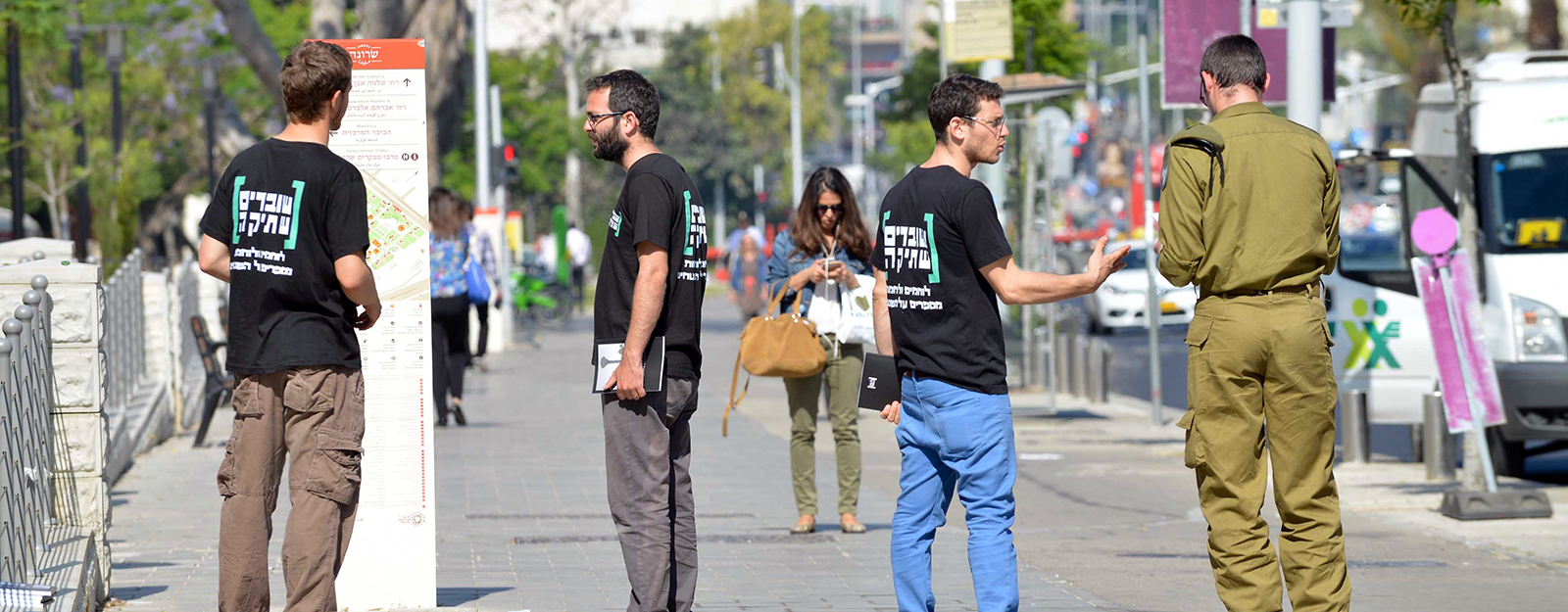– it’s this device with explosives in it – and then we entered.
Was there a public warning for people to get out? We didn’t know they were inside at that moment. Before that stage there had been all these leaflets (warning people to leave), and we saw them running away when we started entering [the Gaza Strip]. It was evident that the civilians understood that we were coming. At this point there was a massive deployment of backup forces, of the various relief forces. This specific house hadn’t been hit by any tank shells when we entered it. As far as I could tell this was due to a mistake – it was supposed to have been hit. Lucky for them it hadn’t. But in general, every house you were meant to enter was supposed to have been fired at beforehand, if not with a tank shell then with a tank-mounted 0.5 [machine gun]. This one was a house with a very, very large courtyard, and that’s where they were all gathered; there were signs indicating that they had packed quickly. I think they may have been under the impression that they would be able to stay. The field interrogator grabbed one of them and took him aside with the company commander; I have no idea what happened there, I suppose he tried to get as much information out of him as was possible. Ultimately, it was made clear to them that now they need to get the hell out of the place. They did.
Where to? Further south, I guess. This absolutely did not concern me. At 04:00 AM, four or five women came over – they had put bags on a stick, like white flags. I don’t speak Arabic, but from their gesturing I gathered that they had come back – so they claimed – to take stuff they had forgotten in the house, stuff they considered critical. Obviously that didn’t happen.
What did you do at that point? We fired toward their feet.









 testimonies
testimonies  media & content
media & content 










 “We didn’t know they were inside”
“We didn’t know they were inside” 

 terms of use & privacy policy
terms of use & privacy policy